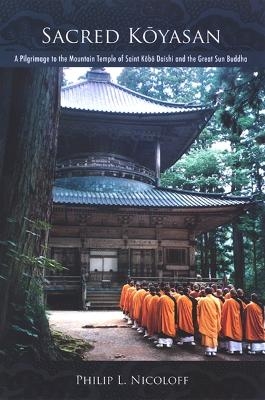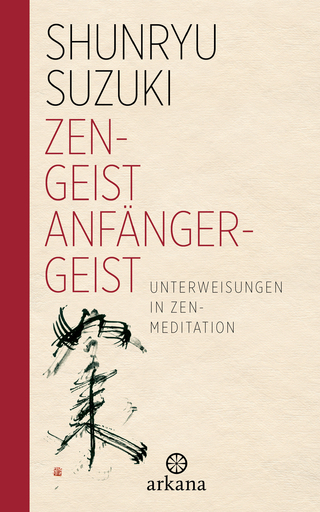
Sacred Kōyasan
State University of New York Press (Verlag)
978-0-7914-7260-6 (ISBN)
For more than one thousand years, the vast Buddhist monastery and temple complex on remote Mount Kōya has been one of Japan's most important religious centers. Saint Kōbō Daishi (also known as Kūkai), founder of the esoteric Shingon school and one of the great figures of world Buddhism, consecrated the mountain for holy purposes in the early 800s. Buried on Kōyasan, Kōbō Daishi is said to be still alive, selflessly advocating for the salvation of all sentient beings.
Located south of Osaka, Kōyasan has attracted visitors from every station of Japanese life, and in recent years, more than a million tourists and pilgrims visit annually. In Sacred Kōyasan, the first book-length study in English of this holy Buddhist mountain, Philip L. Nicoloff invites readers to accompany him on a pilgrimage. Together with the author, the pilgrim-reader ascends the mountain, stays at a temple monastery, and explores Kōyasan's main buildings, sacred statues, and famous forest cemetery. Author and reader participate in the full annual cycle of rituals and ceremonies, and explore the life and legend of Kōbō Daishi and the history of the mountain.
Written for both the scholarly and general reader, Sacred Kōyasan will appeal to potential travelers, dedicated armchair travelers, and all readers interested in Buddhism and Japanese culture.
Philip L. Nicoloff is Professor Emeritus of English at the University of New Hampshire.
Acknowledgments
Introduction
1. Going to the Mountain
The Celestial Railroad
Outside the Fudō Entrance: The Women’s Hall
2. Staying at a Shukubo Temple
Our Midday Arrival
Evening
“A Mind of Rapture”: The Morning Sūtra Service
3. The Life and Legend of Kōbō Daishi (Kūkai)
The Early Years
To China’s Ch’ang-an and Hui-kuo
Conquest of the Japanese Capital
The Founding of Kōyasan
Servant to Emperor and Nation
Kūkai’s Theory of the Ten Stages
The “Death” of Kūkai
4. Twelve Centuries on the Mountain
Abbot Kangen Visits the Tomb—(835–921)
Jōyo, Fujiwara Michinaga, and Ex-Emperor Shirakawa—(921–1129)
Kōya-hijiri, the Rise of Pure Land Buddhism, and Kakuban—(1073–1143)
Kiyomori—(1150–1186)
The Kamakura Era—(1185–1333)
Under the Ashikaga Shōgunate—(1336–1573)
Oda Nobunaga: Kōyasan Under Siege—(1571–1582)
Hideyoshi and Kōyasan’s Wood-Eating Saint—(1582–1603)
Under the Tokugawa—(1603–1867)
Meiji Persecution and the Buddhist Revival—(1867 to the present)
5. Court of the Central Halls
The Great Stūpa: Daitō
The Golden Hall: Kondō
Hall of the Portrait: Miedō
Shrine of the Mountain Gods: Myōjin-sha
Some Other Sights of the Garan
6. Three Mountain Institutions
Kongōbu-ji: Headquarters Temple of Kōyasan Shingon-shū
Daishi Kyōkai Honbu: Headquarters of the Daishi Mission
Reihōkan: Museum of Sacred Treasures
7. The Temple Town
8. Educating a Shingon Priest
The Student Years
Advancing in Rank
9. A Pilgrimage through the Forest Cemetery
First Bridge to the Middle Bridge
The Middle Bridge
On to the Third Bridge
10. The Inner Temple and Kōbō Daishi’s Mausoleum
The Halls Before the Tamagawa
The Jewel River and the Miroku Stone
The Tōrōdō: Lantern Hall
The Gobyō: Kōbō Daishi’s Mausoleum
Record of a Night’s Vigil at the Gobyō
The Morning Fire Offering
11. Kōbō Daishi’s Birthday Celebration
12. Celebrating Kōbō Daishi’s Nyujo and the “Changing of the Robe”
Preparing the New Robe at Hōki-in
The Solar Shō-mieku
The Lunar Shō-mieku
13. Annual Rituals for the Dead
Bon: Midsummer Visitation of the Dead
Higan-e: Ceremony of the Other Shore
14. Leaving the Holy Mountain
Notes
Glossary
Sources Cited
Index
| Erscheint lt. Verlag | 8.11.2007 |
|---|---|
| Zusatzinfo | Total Illustrations: 20 |
| Verlagsort | Albany, NY |
| Sprache | englisch |
| Maße | 152 x 229 mm |
| Gewicht | 599 g |
| Themenwelt | Geisteswissenschaften ► Religion / Theologie ► Buddhismus |
| ISBN-10 | 0-7914-7260-4 / 0791472604 |
| ISBN-13 | 978-0-7914-7260-6 / 9780791472606 |
| Zustand | Neuware |
| Haben Sie eine Frage zum Produkt? |
aus dem Bereich


